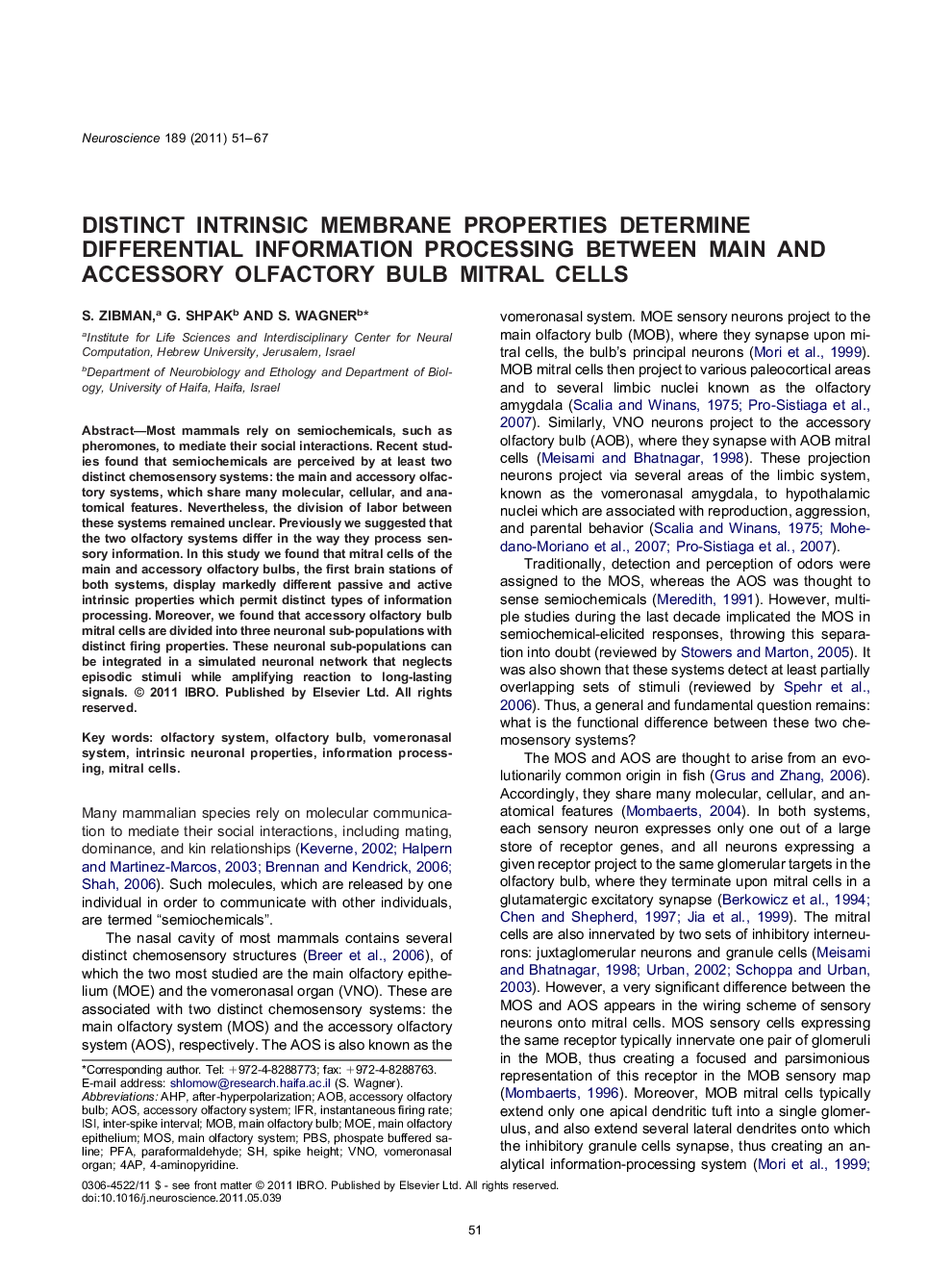| Article ID | Journal | Published Year | Pages | File Type |
|---|---|---|---|---|
| 6276334 | Neuroscience | 2011 | 17 Pages |
Most mammals rely on semiochemicals, such as pheromones, to mediate their social interactions. Recent studies found that semiochemicals are perceived by at least two distinct chemosensory systems: the main and accessory olfactory systems, which share many molecular, cellular, and anatomical features. Nevertheless, the division of labor between these systems remained unclear. Previously we suggested that the two olfactory systems differ in the way they process sensory information. In this study we found that mitral cells of the main and accessory olfactory bulbs, the first brain stations of both systems, display markedly different passive and active intrinsic properties which permit distinct types of information processing. Moreover, we found that accessory olfactory bulb mitral cells are divided into three neuronal sub-populations with distinct firing properties. These neuronal sub-populations can be integrated in a simulated neuronal network that neglects episodic stimuli while amplifying reaction to long-lasting signals.
â¶Mitral cells of the main and accessory olfactory bulbs differ markedly in their passive and active intrinsic properties. â¶AOB mitral cells exhibit a much higher input resistance due to their smaller membrane area. â¶MOB mitral cells are much more excitable than AOB mitral cells, showing higher minimal and maximal firing responses. â¶The firing responses of AOB mitral cells are modulated over a prolonged time window. â¶AOB mitral cells may be categorized into three neuronal populations according to the dynamics of their firing responses.
